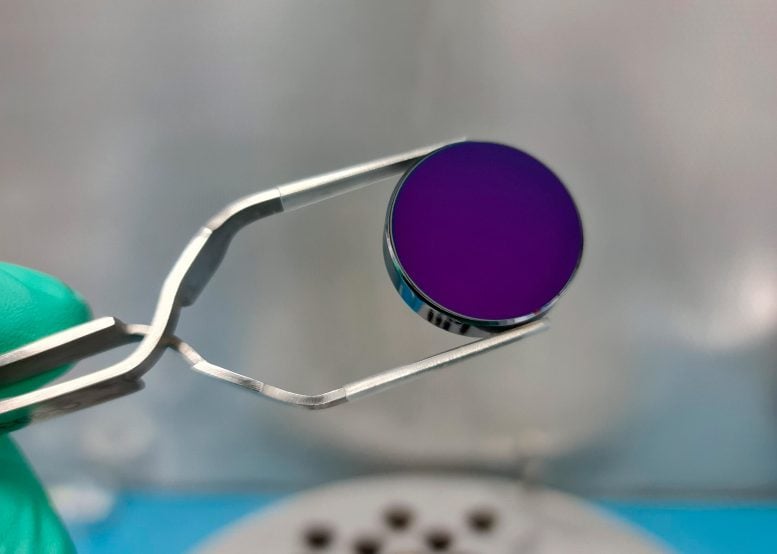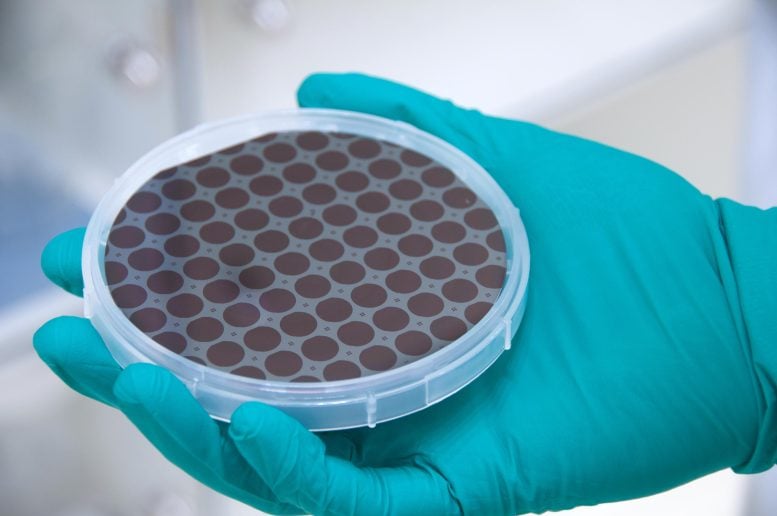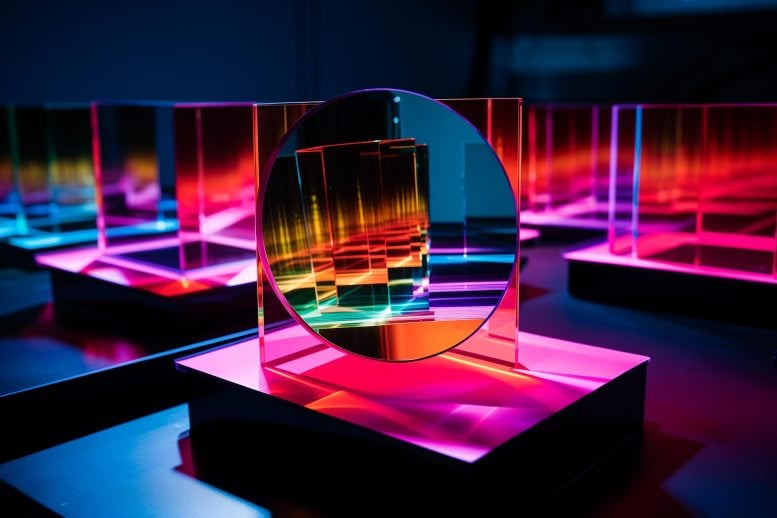International collaborative effort creates the first mid-infrared supermirror with superior reflectivity, e.g. nature communications. This innovation is expected to significantly enhance ambient gas sensing and industrial processes, marking a major leap forward in mirror technology. Image source: SciTechDaily.com
Advanced infrared scope enhances climate and biofuels research through precision trace gas sensing.
An international research team from the United States, Austria and Switzerland has demonstrated the first true supermirror in the mid-infrared spectral region. These mirrors are key to many applications, such as spectroscopy for environmental sensing, and laser cutting and welding for manufacturing.
Achieve near-perfect reflectivity
In the world of high-performance mirrors, everyone is chasing the impossible: a coating with perfect reflectivity. Advanced metal mirrors have a reflectivity of up to 99% in the visible wavelength range (i.e. between 380 nm and 700 nm), which means 1 Photon Every 99 reflections will be lost. This may seem impressive, but in the near-infrared region (i.e., between ~780 nm and 2.5 μm), mirror coatings already exhibit 99.9997% reflectivity, losing only 3 photons out of 1 million reflected photons.

One-inch diameter silicon substrates are coated with a conventionally deposited interference coating.Photo credit: Valentin Witwer
It has long been hoped that extending the performance level of such supermirrors into the mid-infrared (wavelengths from 2.5 µm to 10 µm and beyond) could enable advances in trace gas sensing missions relevant to climate change and biofuels, e.g. and industrial applications such as laser processing and nanomachining. By far the best mid-infrared mirrors lose about 1 photon per 10,000, which is about 33 times greater than near-infrared mirrors.
International cooperation leads to breakthroughs
As described in an article published in nature communicationsNow demonstrated by Crystalline Solutions from Thorlabs (Santa Barbara, CA), the Christian Doppler Laboratory of Mid-IR Spectroscopy at the University of Vienna (Austria), the National Institute of Standards and Technology (NIST), and the University of Neuchâtel (Switzerland) The first true mid-infrared supermirror. These mirrors lose only 8 photons out of 1 million and have a reflectivity of 99.99923%. Achieving such extreme reflectivity requires a combination of materials, mirror design and manufacturing processes.

Patterned four-inch GaAs wafers with single-crystal GaAs/AlGaAs wafers are ultimately fused to a coated silicon substrate.Photo credit: George Winkler
A new paradigm in mirror coating
To realize a first-generation mid-infrared (MIR) supermirror, researchers conceived and demonstrated a new coating paradigm. They combined traditional thin-film coating techniques with novel semiconductor materials and methods to overcome material limitations in the challenging mid-infrared region.
“This work builds on our pioneering efforts in substrate-transferred crystal coatings,” said Garrett Cole, technical manager of Thorlabs’ Crystal Solutions team. “By extending this platform to longer wavelengths, our international The collaboration demonstrates for the first time a MIR coating method with undesirable absorption and scattering losses of less than 5 parts per million.”
These mirrors leverage the extremely high purity and superior structural quality of molecular beam epitaxy, an advanced process used to fabricate many different semiconductor devices, to produce single-crystal GaAs/AlGaAs multilayers with negligible absorption and scattering. This starting material is then transformed into a high-performance mirror using advanced microfabrication techniques, including direct “fusion” bonding to a high-quality conventional amorphous thin-film interference coating deposited at the University of Neuchâtel.
Measure and prove superior performance
Making these groundbreaking mirrors is only half the challenge. Scientists will also need to systematically measure the mirrors to demonstrate their superior performance. Gar-Wing Truong, chief scientist at Thorlabs Crystalline Solutions, said: “The team put in a huge effort to combine equipment and expertise to ultimately show a total loss as low as 7.7 parts per million, which is lower than any previous use of conventional MIR coatings. technology.”
Co-lead author Lukas Perner, a scientist at the University of Vienna, added: “As a co-inventor of this novel coating paradigm, it is exciting and rewarding to test these mirrors. We are innovating This joint effort on mirror technology and advanced characterization methods allowed us to demonstrate its outstanding performance and break new ground in the field of MIR.”
Impact on environmental sensing and spectroscopy
An immediate application of these new mid-infrared supermirrors is to greatly increase the sensitivity of optical devices used to measure trace amounts of gases. These devices, called cavity ring-down spectrometers (CRDS), can detect and quantify minute amounts of important environmental markers, such as carbon monoxide. The team turned to NIST research chemists Adam Fleisher and Michelle Bailey, who have long worked on the technology. In proof-of-concept experiments testing these mirrors, Fleischer and Bailey showed that their performance exceeds the state-of-the-art.
“Low-loss mirrors make it possible to achieve extremely long optical path lengths in small devices—in this case, it’s like squeezing the distance from Philadelphia to New York down to a one-meter span,” Bailey said. “This is a key advantage of ultrasensitive spectroscopy in the mid-infrared spectral range, including the measurement of radioactive isotopes, which is important for nuclear forensics and carbon dating.”
Reference: “Mid-infrared supermirror with fineness over 400 000” by Gar-Wing Truong, Lukas W. Perner, D. Michelle Bailey, Georg Winkler, Seth B. Cataño-Lopez, Valentin J. Wittwer, Thomas Südmeyer , Catherine Nguyen, David Forman, Adam J. Fleischer, Oliver H. Hecker, and Garrett D. Cole, December 6, 2023 nature communications.
DOI: 10.1038/s41467-023-43367-z
#Pursuit #perfection #ultimate #midinfrared #mirror #reflectivity
Image Source : scitechdaily.com
